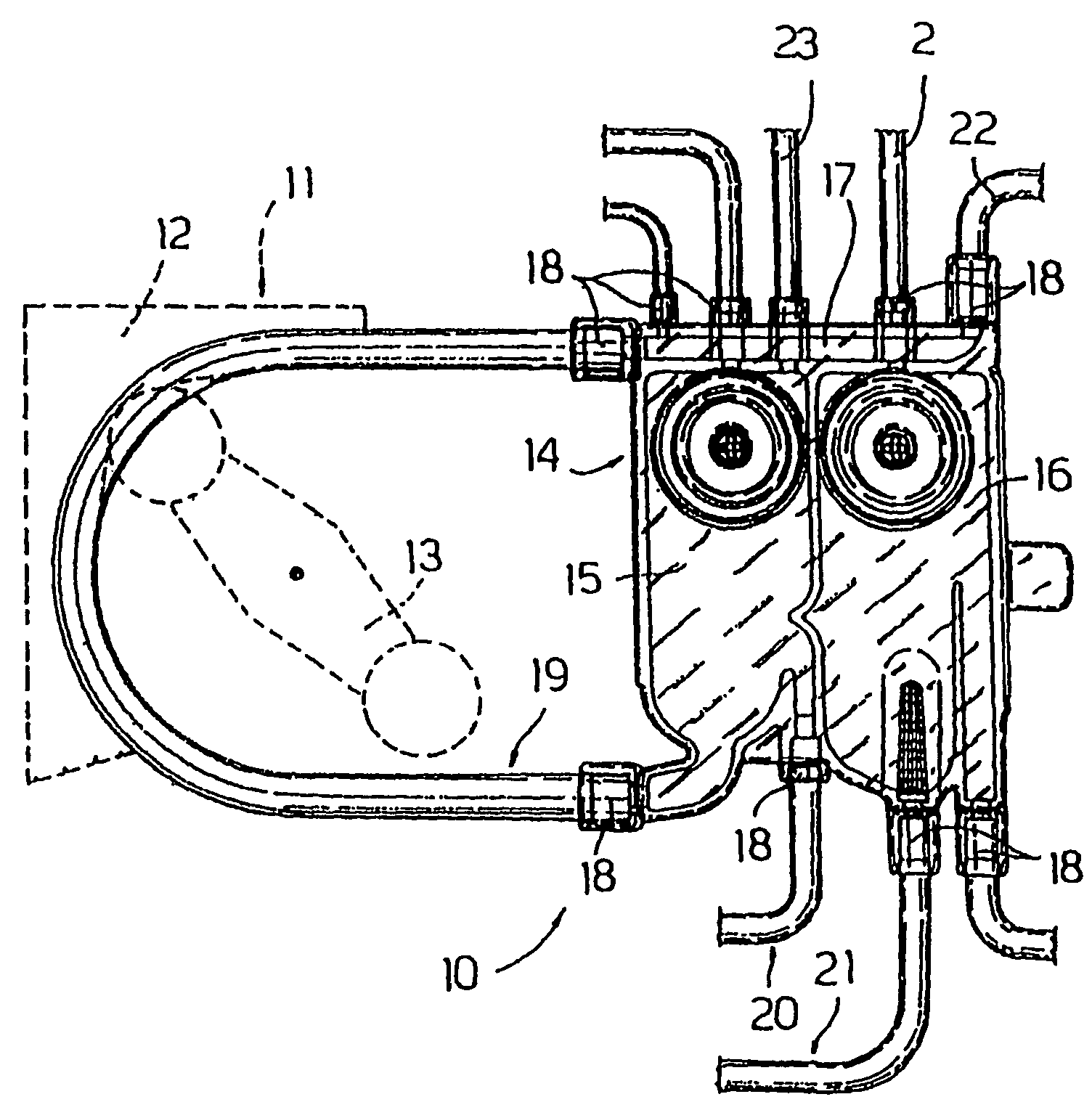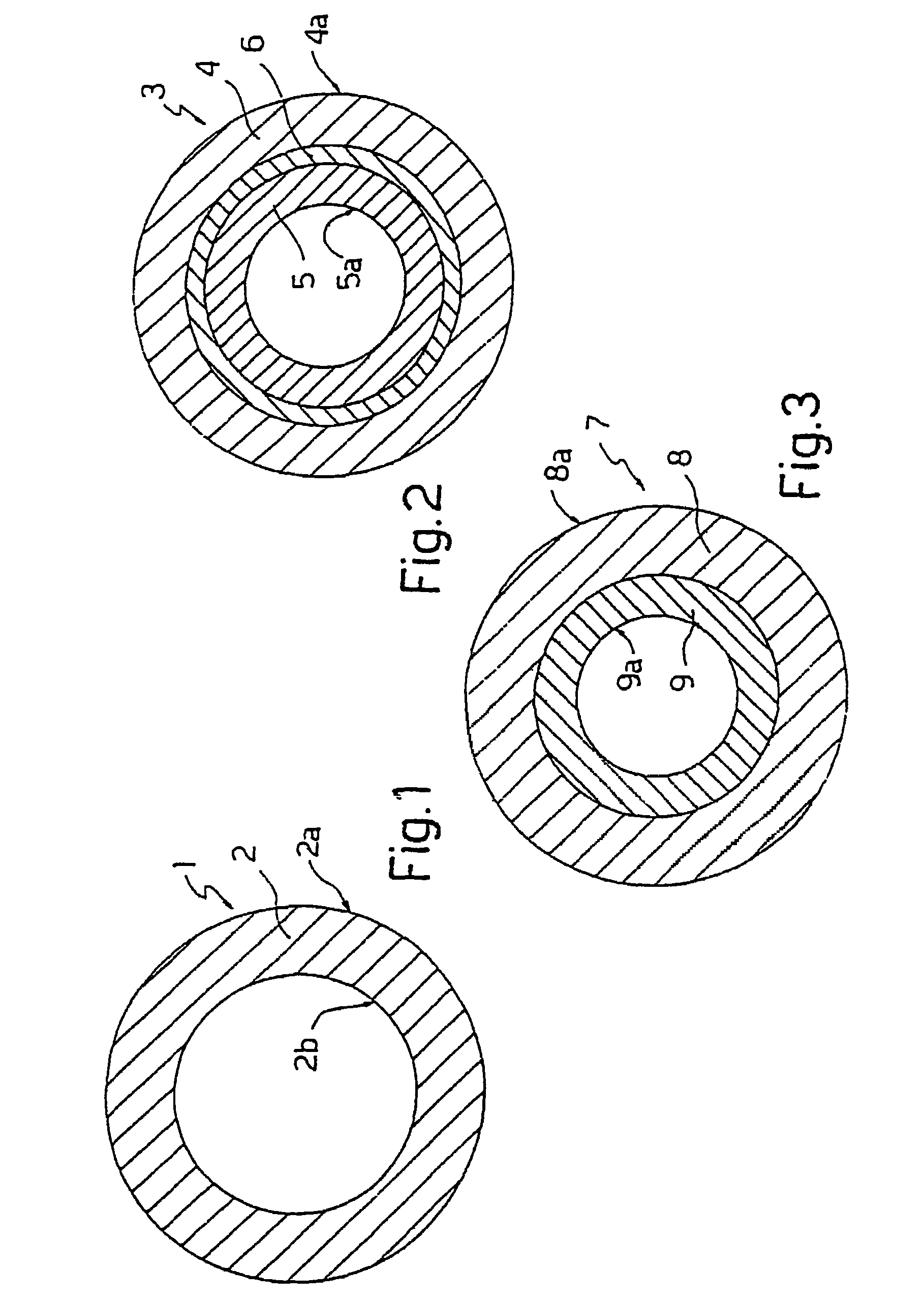Tube for medical applications and circuit incorporating such tube
a technology of medical applications and tubes, applied in the direction of prosthesis, catheters, other blood circulation devices, etc., can solve the problems of incineration, waste of resources, and waste of resources, and achieve the effect of simple and economic manufactur
- Summary
- Abstract
- Description
- Claims
- Application Information
AI Technical Summary
Benefits of technology
Problems solved by technology
Method used
Image
Examples
example 1
Single-layer Tube Manufactured from Thermoplastic Polyurethane TPU.
[0043]The applicant has performed tests on welding between two types of tube 1 (indicated below as tube 1A and tube 1B) manufactured from thermoplastic polyurethane and a connector 18 manufactured from PETG. Tube 1 has the following dimensions:
Tube 1A
[0044]Inside diameter 4.17 mm—Outside diameter 6.55 mm
Tube 1B
[0045]Inside diameter 6.36 mm—Outside diameter 9.54 mm
[0046]The thermoplastic polyurethane TPU used to manufacture tubes 1A was TEXIN® 5286 manufactured by Bayer, while tube 1B was manufactured from a thermoplastic polyurethane, DESMOPAN KU 2-8670 manufactured by Bayer, to which wax was added as a lubricant.
[0047]The bond was produced by applying cyclohexanone to the outer surface 2a of tube 1 along an end portion of that tube 1. The portion was inserted into connector 18, which partly dissolved on contact with the cyclohexanone placed on the aforesaid portion.
[0048]Once the action of the solvent had ceased the...
example 2
Multilayer Tube with an Outer Layer of Thermoplastic Polyurethane TPU.
[0050]The applicant has performed tests on welding between a tube 3 and a connector 18 manufactured from PETG.
[0051]Tube 3 had the following dimensions: Inside diameter 4.17 mm—Outside diameter 6.55 mm—Thickness of the outer layer 0.10 mm—Thickness of the inner layer 0.99 mm—Thickness of the connecting layer 0.10 mm.
[0052]The thermoplastic polyurethane TPU used to manufacture thermoplastic outer layer 4 was TEXIN® 5286 manufactured by Bayer.
[0053]Inner layer 5 was manufactured using a base material of CAVITON MED PR 4907 manufactured by Wittenburg BV—the Netherlands.
[0054]Connecting layer 6 was manufactured using a base material of CAWITON MED PR 5287 manufactured by the same Wittenburg.
[0055]The weld was made by applying cyclohexanone to the outer surface 4a of tube 3 along an end portion of that tube 3.
[0056]The portion was inserted into connector 18, which dissolved on contact with the cyclohexanone placed on t...
PUM
| Property | Measurement | Unit |
|---|---|---|
| internal diameter | aaaaa | aaaaa |
| internal diameter | aaaaa | aaaaa |
| thickness | aaaaa | aaaaa |
Abstract
Description
Claims
Application Information
 Login to View More
Login to View More - R&D
- Intellectual Property
- Life Sciences
- Materials
- Tech Scout
- Unparalleled Data Quality
- Higher Quality Content
- 60% Fewer Hallucinations
Browse by: Latest US Patents, China's latest patents, Technical Efficacy Thesaurus, Application Domain, Technology Topic, Popular Technical Reports.
© 2025 PatSnap. All rights reserved.Legal|Privacy policy|Modern Slavery Act Transparency Statement|Sitemap|About US| Contact US: help@patsnap.com



